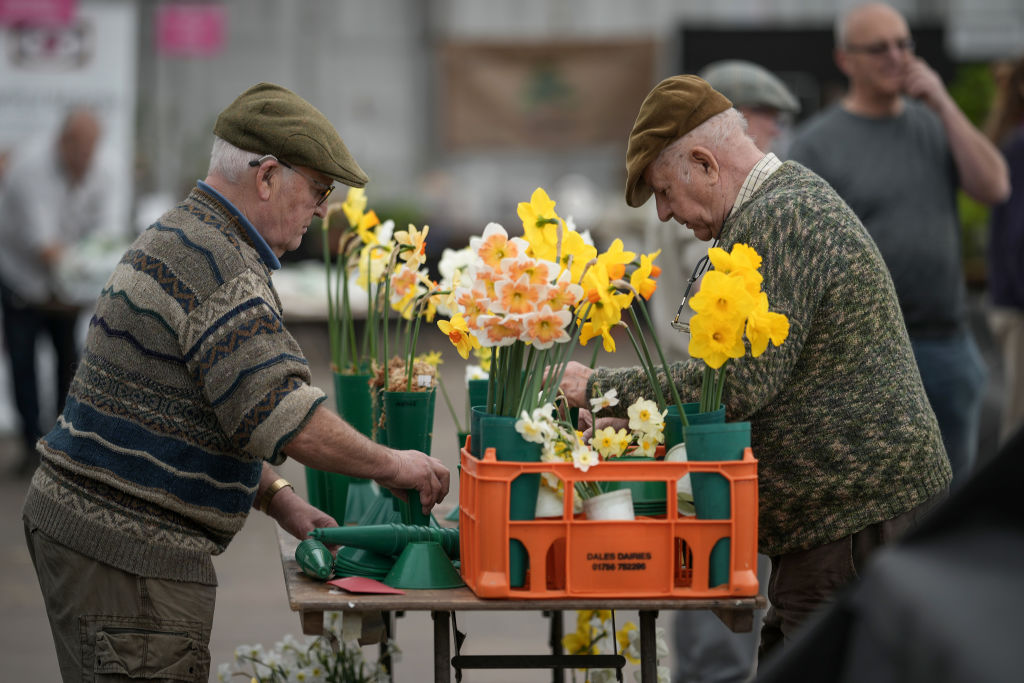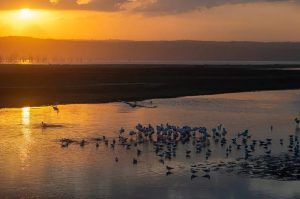Pennsylvania winters can be unyielding. Though the extreme, single-digit temperatures and mounds of sometimes-onerous (but always beautiful) snow come and go, the bleak, overcast skies tend to overstay their welcome, hanging around like a monochromatic weight on one’s psyche.
“Western Pennsylvania is known for two things,” UPMC psychiatrist Dr. Lawson Bernstein told CBS News, “producing linebackers and one of the highest prevalence of Seasonal Affective Disorder (SAD) in the entire country.”
Sigh. While I grumbled this morning about having to continue bundling up well into spring (it was 36 degrees), a bunch of cheery golden blossoms near the edge of the woods reminded me this was no time to feel sorry my myself. I should instead be having a nanny nanny boo boo moment, gloating to my friends and relations in California and Florida who enjoy mild weather year-round. For I have something they do not: a sweet connection to the past and certain hope for the future.
You see, the flowers that reminded me that “hope springs eternal” were planted decades ago by my ancestors. They’re daffodils, known for being “surprisingly cold-tolerant,” hardy, and some of the first flowers to show themselves just when you think winter will last forever. Sometimes they even stand firm in defiance of a late-season snowfall, poking their sunny faces through the frozen blanket to let everyone know the storm is nothing more than winter’s last hurrah.
A friend and I, along with my mother, have made it a tradition to “go daffodilling” on my family’s old farm property when the ten or so varieties are in full bloom (and the snow is finally gone). We traipse triumphantly over green grass — the fresh blades still short, beginning to stretch themselves, as if awaking from hibernation and blinking at the sunbeams that for months were obscured by tundra.
There are patches of flowers here and there, some obviously planted in places near the house where they could be seen. Others, like our clan itself, are scattered in puzzling spots — here a patch on the side of a secluded hill, there a clump blooming singularly in a meadow. It’s something of a treasure hunt. By now, we know more or less where to find the daffodils, but collecting them is still a sport. Our memories are too poor to recall year-to-year which variety grows where, and the surprise of what we find is as delightful as receiving a flower arrangement from a loved one with a variety of blooms to inspect.
There are the clumpy daffodils that are a darker mustard color and resemble a blobby impressionist painting. The more common yellow trumpet daffodil has been prolific, too, but this family is not all the same: this year, I counted six variations of the trumpet. Some are a solid canary yellow. Some are all-white. All have a trumpeted center that’s ruffled on the edge with six symmetrical petals, but one has yellow petals and a distinctively orange trumpet that sets it apart. Another has white petals and a trumpet the color of an egg yolk. Yet another has bright white petals and a pale-yellow middle. They range in size, too, from diminutive and delicate, to rather boorish and overwhelming in a vase.
We try to choose our favorite, but it’s impossible. My mother tends to prefer the less refined flowers, theorizing that the more primitive they look, the older they must be. I gravitate toward the smaller daffodil with a middle that doesn’t protrude like the trumpets, but is nonetheless dramatic in its red-orange color that contrasts against its cream-colored petals (the “poet’s daffodil” I think it’s called?).
But we can’t help but love them all. Just when you think you’ve settled on one, you look to the one beside it, and it’s a conundrum. It’s just as well. Legend has it that daffodils are good luck — but only if you present them as a bunch. The flower’s scientific name is Narcissus, and tradition holds that a singular daffodil signifies a one-sided love, as the Greek for whom we coined the term “narcissism” is said to have been turned into a daffodil after staring for too long at his own beautiful reflection.
Thus it is with daffodils and daffodil gathering to this day. It is best done in bunches — with friends and family — and the finest bouquets consist of a mix of characteristics — just like friends and families.
I like to consider as we walk along what my ancestors who planted the daffodils were like and why they placed the daffodils where they did. Mother Nature has undoubtedly had a hand in propagating her own wild garden over the decades (“Aging plots of daffodils will expand and multiply as time goes by” through a process called “naturalization,” GardeningKnowHow.com tells us). But many must have been hand-sown for a reason. Did they enjoy picnicking in this particular part of the property, I wonder?
To be reconnected to my relatives — long since gone, but alive every spring in these resilient, beautiful flowers — is a transformative experience that’s intensified in juxtaposition to a harsh winter. They’re inspiring things, these “Lent lilies,” proving year upon year that the longest, most brutal cold snap is no match for something determined to blossom. Our ancestors, the pioneers, were the same way, or else none of us would be here.
NaturalLands.org details how ancient daffodils grow in the Harold N. Peek Preserve in southern New Jersey. Author Steve Eisenhauer tells us:
As far as I can tell, these daffodils were growing here eighty years or so ago. They may have been planted a century or two before that! Referencing the lifespan of daffodils, the literature refers to them as long-lived or “living indefinitely.”
So, whenever you see crowded daffodils growing in fields or forests, with little or no evidence of human residences nearby, take a closer look. The variety or species of daffodil you may be examining may have been one the pilgrims planted. It may no longer be available to purchase. We may never know if the original bulb planted one or two or three hundred years ago in each patch is still alive today. It may have the prettiest flower you now see. Or it may be long gone, with its countless descendants carrying on its life as identical genetic clones.
“Under good growing conditions, they should outlast any of us,” the American Daffodil Society says. Well, if I want hope and tradition and a rugged spirit that isn’t afraid of a little cold weather and a living way to get back to our family roots, I have some planting to do.


















